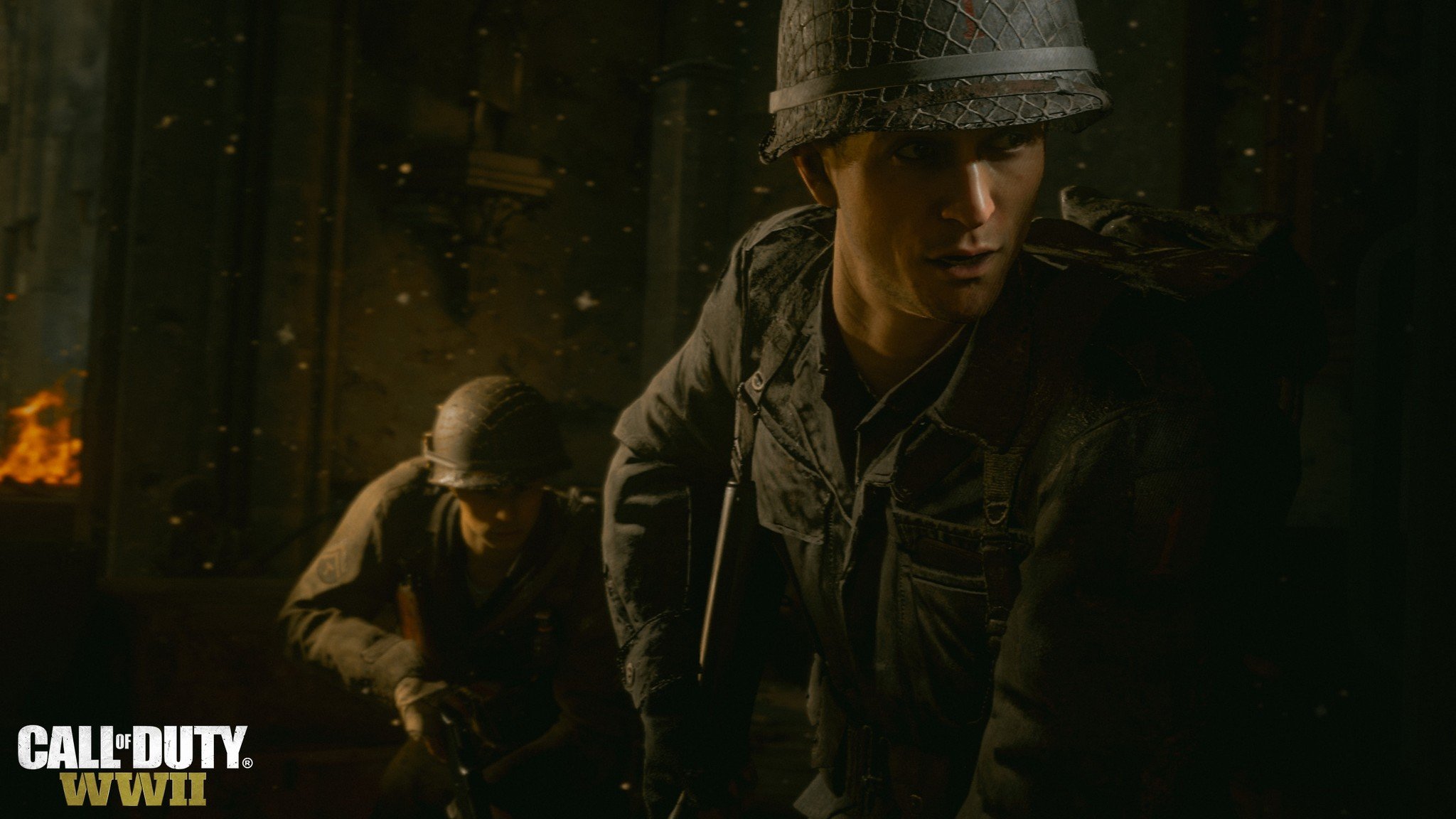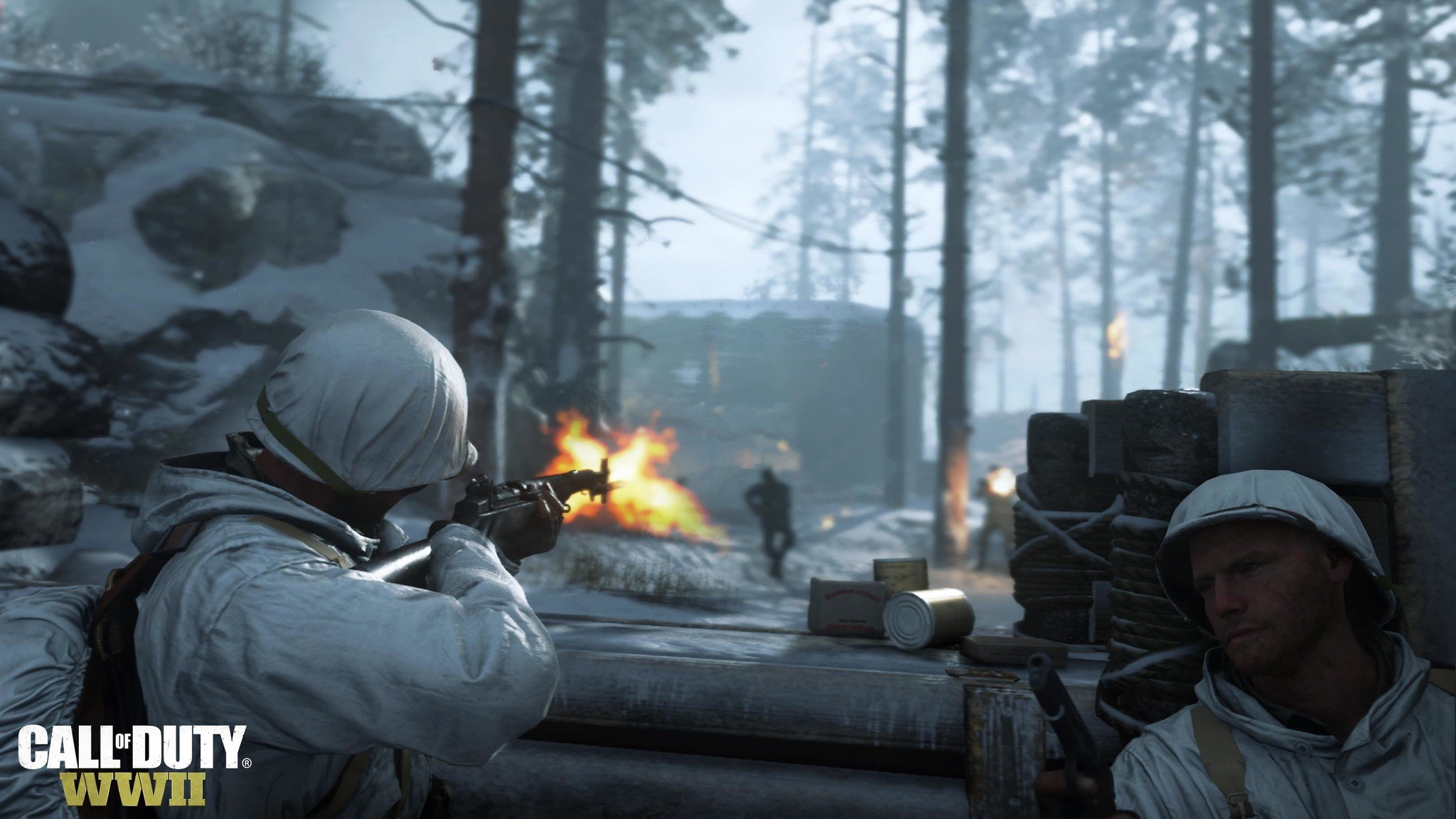Call of Duty: WWII Divisions guide — here's your 'Create-A-Class' replacement
Call of Duty: WWII has ditched the 'Create-A-Class' system, ushering in a new approach to multiplayer loadouts.


Call of Duty: WWII promises to bring the franchise back to its roots, with the revival of "boots on the ground" multiplayer gameplay later this year. Moving away from jump-packs and exosuits, the game is already shaping up to deliver some welcome changes, while also bringing back a level of purity associated with the series a decade ago.
One of the biggest new changes to Call of Duty: WWII's multiplayer is the new "Divisions" system – a new route for customizing your multiplayer experience.
What are Divisions?

Divisions are a new approach to competitive multiplayer classes, making their debut in Call of Duty: WWII. Unlike the existing "Create-A-Class" system, which allows players to finely tweak multiplayer classes to their liking, Divisions promote a more structured approach to both gameplay and progression.
After "enlisting" in a Division, players will gain access to new abilities – some even available exclusively to certain Divisions. While there are still options to customize your gameplay experience, Divisions generally encourage players to adopt more defined styles of play.
Wait, so what happened to Create-A-Class?

Divisions are a replacement of the Create-A-Class system, despite being a major component of Call of Duty multiplayer for almost ten years. While Divisions take forward several concepts from the old loadout system, the evolution ensures players having a much more guided path through multiplayer progression.
Like Create-A-Class, players can choose their primary weapons, secondary weapons, and equipment all from the entire Call of Duty: WWII arsenal. However, attributes decided by your Division, such as passive skills and upgrades, will be tied down by the route you've chosen to pursue. There is still the flexibility to shape a class around your personal preferences, although over time you'll come to discover certain weapon combinations fit well with a Division's abilities.
How do Divisions work?

Upon getting started with Call of Duty: WWII's multiplayer, all users will be asked to enlist in a specific Division. Players will be able to choose from the Airborne, Mountain, Infantry, Armored or Expeditionary Divisions, which each provide their own training paths to aid a specific play style.
All the latest news, reviews, and guides for Windows and Xbox diehards.
Players will be able to switch between their enlisted Divisions on the fly. All Divisions are also available from the start, similarly to classes in most multiplayer shooters, however, new Division unlocks can be earned during the early stages of progression.
Each multiplayer loadout for a Division is comprised of weapons and associated skills. While weapons and equipment form the basis for combat, Division Skills, Division Training, and Basic Training are all additional abilities, which enhance your performance on the field. Here's a breakdown of the core components behind a Division loadout.
- Primary weapons: This is your main companion on the field and be your main method of delivering heavy damage. These weapons can also be equipped with various attachments to change their performance. Rifles, submachine guns, light machine guns, and shotguns are all under this weapon type.
- Secondary weapons: Secondary weapons are also a required component of Divisions, providing some supporting fire when times get tough. While pistols are the most common secondary firearms, rocket launchers, shovels, and ice picks are also confirmed to occupy this slot. Some of these weapons also support certain attachments.
- Equipment: The equipment slot is reserved for additional gadgets which don't fall under weapon slots. So far, grenades and mines are the only confirmed items to fall into this category.
- Division Skill: Your Division Skill is an ability available exclusively for your Division, based on its style of play. Division Skills cannot be changed and are one of the defining features of a class.
- Division Training: Division Training is a route of progression associated with your class, providing access to additional abilities outside of your Division Skill. These are tiered into levels and upon leveling up, new perks are unlocked.
- Basic Training: Your Basic Training slot is used to equip a third and final set of perks, which mostly add enhancements to your core abilities. These generally don't enhance your Division-specific abilities and don't appear to be tied to a Division.
For a deeper look into the weapons, equipment, and scorestreaks in Call of Duty: WW2, make sure to take a look at our in-depth list of everything announced so far.
What Division types are available?
For Call of Duty: WWII's launch, Activision has announced five unique Divisions and how we can expect them to play. In current builds of the game's multiplayer, customization of Divisions has been restricted to provide a better sense of their expected playstyle. As a result, specific weapons are paired to Divisions from the outset. Here's a brief look at each of the Divisions, and what they offer in battle.
- Infantry: is a traditional front-lines soldier, packing a semi-automatic rifle and self-loading pistol. This is a generally well-rounded class but excels in offensive situations.
- Expeditionary: is an aggressive scout class, best suited for when situations get up close and personal. While the class' shotgun provides heavy stopping power, the addition of incendiary shells can add extra heat to the battle.
- Airborne: soldiers gain access to a submachine gun with an optional suppressor, allowing for a more strategic and tactical angle to gameplay. This class can also bring smoke grenades into combat, adding a new edge to encounters.
- Armored: is a tank class, with heavy weapons, heavy armor, and unrivaled power. Although you'll be losing the agility of a traditional soldier, the LMG and Bazooka can be a deadly combination.
- Mountain: is the long-range class of Call of Duty: WW2, with access to sniper rifles for precise, sharp shooting. As one of the stealthier classes available, enemies won't know what hit them from afar.
Further reading

Matt Brown was formerly a Windows Central's Senior Editor, Xbox & PC, at Future. Following over seven years of professional consumer technology and gaming coverage, he’s focused on the world of Microsoft's gaming efforts. You can follow him on Twitter @mattjbrown.
